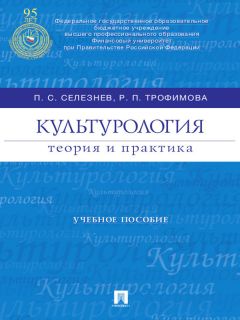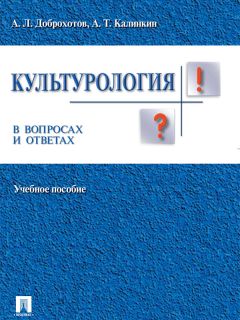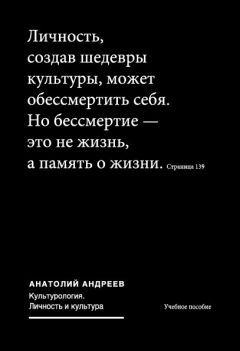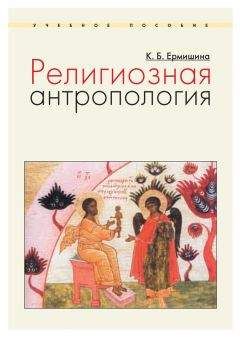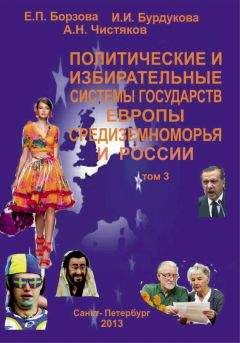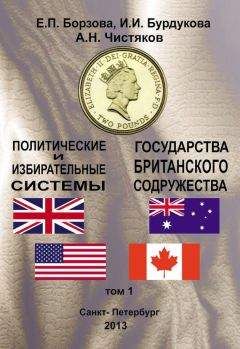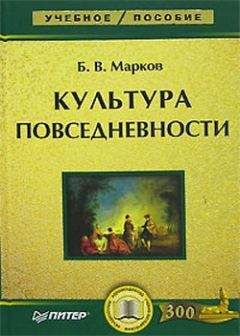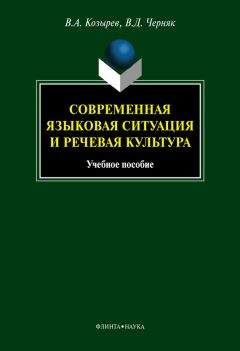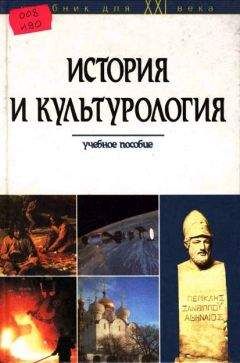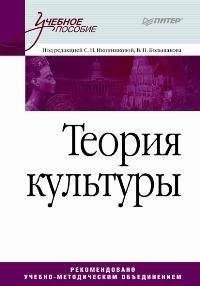Алексей Минченков - Glimpses of Britain. Учебное пособие
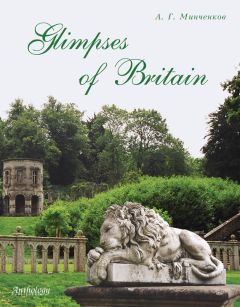
Все авторские права соблюдены. Напишите нам, если Вы не согласны.
Описание книги "Glimpses of Britain. Учебное пособие"
Описание и краткое содержание "Glimpses of Britain. Учебное пособие" читать бесплатно онлайн.
Учебное пособие посвящено истории и современной жизни Великобритании. В хронологическом порядке описаны основные исторические события и личности, оказавшие влияние на формирование британского самосознания и культуры. Отдельное внимание уделено истории архитектурных стилей. Подробно рассматривается современное состояние монархии, системы государственного и местного управления, парламентская и судебная системы, а также вопросы, связанные с национальным наследием и государственной символикой. Пособие включает в себя переводческий глоссарий с фонетической транскрипцией и хрестоматию, содержащую газетно-журнальные тексты страноведческого характера и выходящую отдельной книгой. Издание богато иллюстрировано авторскими фотографиями.
Пособие предназначено для студентов и школьников, занимающихся страноведением Великобритании, преподавателей, переводчиков и всех, кто интересуется историей, культурой и современной жизнью этой страны.
Thus the scene was set for the king to begin his attack on the Church with the support of Parliament. In 1530 the whole clergy was indicted of unlawful jurisdiction, but two months later pardoned in return for a huge fine and the recognition of the king as supreme head of the Church of England. In 1531 Henry admitted Thomas Cromwell to his Council; he was also made Chancellor of the Exchequer. Events began to move more swiftly. Parliament attacked the church courts and they were put in the hands of the king. In 1533 Henry married Anne Boleyn secretly. In March 1533 Parliament passed an act breaking the church from Rome, in effect creating the Church of England as against the Church in England. When the old Archbishop of Canterbury died Henry appointed a reformer, Thomas Cranmer. He granted the king his divorce, Henry remarried and, in September, the new queen gave birth to Elizabeth.
The year after the Act of Supremacy transferred to the king all ecclesiastical dues formerly sent to the pope. What is surprising is how little opposition this revolution evoked. There were only few protesters, like Thomas More, but on the whole the revolution which destroyed the medieval church in England was a bloodless one.
Anne Boleyn
Now it was the turn of the monasteries. In 1535 Cromwell sent out commissioners to make a detailed review of them. Between 1536 and 1540 the monasteries, about 800, a quarter of the land of the country, were dissolved. It changed the physical appearance of the landscape. The inmates were either pensioned off or became parish clergy. Only 3 abbots resisted and were hanged. Relics and images were destroyed. The shrines were leveled to the ground. The dissolution had important social and political consequences. Two thirds of the abbey lands were sold, the rest was kept by the crown. An immense amount of land came into the possession of the middle classes. Now there were more landowners than ever before: nobility, gentry, merchants, lawyers and yeomen farmers. They gradually came to have great power, for the crown had sought alliance with them to carry through the Reformation. New previously unknown families began to join the ranks of the political йlite.
Henry VIII
The income of the crown doubled calling for new financial departments to deal with the new sources of revenue. The structure of government was changed. An inner circle developed in the Council, the Privy Council, the ancestor of today’s Cabinet. Even more significant was the place given to Parliament, especially the Commons.
By the end of the 1530s the pattern at court was beginning to take on a character it was to have in the future – a division between those who wanted no further change, and indeed wanted to go back, and those who pressed for more. The success of these rival factions changed according to the mood of the king, but in general he began to understand that things were going too far and too fast. After Cromwell’s execution in 1540 the conservatives prevailed. Under the wise influence of his sixth wife Henry was reconciled with his daughters by the first two wives, at the same time appointing Protestant teachers to educate young Edward, by his third wife, and a mainly Protestant Council to rule until Edward was old enough. He wanted a moderate council to keep the peace between the two extremes. While Henry lived he was able to control both Protestant and Catholic trouble-makers. But this policy couldn’t last for ever; England had to make a choice. Before that, however, it had to learn by bitter experience. For six years under the boy Edward the country suffered from extreme Protestants, then for 5 years under Mary – from extreme Catholics.
An interesting example of how families rose to prominence in those times is the history of the Spencer family, of which the late Princess Diana is a member. The Spencers originally came from Warwickshire, where they farmed sheep. They were successful businessmen and with each generation the family grew a little richer. By 1508 John Spencer had saved enough capital to buy the 300acre estate of Althorp. Later he acquired a coat of arms and a knighthood from Henry VIII. His descendants were no less diligent, and in the 17th century the family was one of the richest in England. Granted peerage by James I, the Spencers left farming to their agents and concentrated on court politics. In the 18th century their estate was worth £750,000 – roughly equivalent to £45 million today – and included 100,000 acres in twentyseven different counties. Lord Spencer had an income of £700 a week in an era when a gentleman could live off £300 a year (for the 18th century we usually multiply by 60 to get equivalent 20th century values).
During the reign of Edward VI radical steps were taken in the Protestant direction. First of all, the appearance of every parish church was changed. Images of the Virgin, Christ and saints were taken out, burned or smashed to bits. The wall paintings were whitewashed. By 1551 the churches had assumed the bare empty appearance which was to last until the Victorian age.
In 1549 Thomas Cranmer compiled a Book of Common Prayer. It was in English and retained much of Catholic practice, including the use of rituals and vestments. In June the same year Parliament passed an Act of Uniformity imposing its use in every church. In 1552 a second Book of Common Prayer, a more radical version, was adopted under the influence of the Duke of Northumberland. It abolished vestments and prayers for the dead, the old Catholic mass disappeared completely. Penalties were laid down for anyone who failed to use the new Prayer Book. The Latin mass was replaced by the services of Holy Communion enacted at a table in the nave. Morning prayer became the main form of worship, including psalm singing and the sermon from the pulpit. This pattern was to last into the 21th century.
The year 1552 also saw the adoption of 42 Articles of Faith compiled by Cranmer and containing the doctrine of the Church of England.
All in all, the change that occurred in the interior of the English churches and the form of worship within a period of just about 20 years (from the moment when the Church of England was created in 1533 till the end of the reign of Edward VI) was enormous and dramatic, and must have appeared all the more so for the people of the times. At the beginning of Henry VIII’s reign the experience of going to church was as it had been for centuries. The congregation gathered in the nave to hear the Latin mass. The walls and windows of the church were bright with paintings and stained glass depicting the gospel stories and the lives of the saints. There were carved images of the Virgin and saints before which candles were lit. The nave was divided from the chancel by a screen beyond which the laity didn’t pass, and above which was suspended a life-size image of Christ on the cross. Beyond lay the chancel, sacred area, with a stone altar. Sometimes near the altar there would be relics of saints, bones or fragments of clothing. The altar was adorned with rich hangings. The altar was the focus of the entire church, for on it was re-enacted in the mass each day the sacrifice of Christ on the cross. The priest wore embroidered vestments, incense was burned, and at solemn moments bells were rung. Above the altar a small piece of consecrated bread, the host, was exhibited within a suspended container called a pyx, covered by a veil.
Half a century later that experience was to be very different. Although the stained glass might still remain, the interior was virtually stripped bare, every painted or sculpted image either painted over, taken away or defaced, the walls whitewashed and adorned only with biblical texts. Over the screen there was the Royal Arms instead of the cross. Within the chancel the stone altar and pyx had gone. Instead there was a wooden table, used only sometimes when Holy Communion, which had come to replace the mass, took place. The priest was no longer attired with vestments, but a surplice. On most Sunday the service would have been one of morning prayer, said in English, and in which the congregation took part. The main focus was no longer the chancel, but the pulpit from which the sermon was delivered. A Christianity which had appealed to the eye had been replaced by one whose prime organ was the ear and whose aim was to hear and receive the word of God.
The short reign of Mary I (1553–1558), nicknamed the Bloody because of her persecution of Protestants, was a reversion to Catholicism. The queen married Philip II of Spain, the leader of the Catholic camp in Europe, a move that alienated most of the members of Parliament and provoked a rebellion in Kent. She had Parliament repeal all the Protestant acts of the previous reign, restoring religion to where it had been in 1547, and England was formally reconciled to Rome. Worse, she revived the heresy laws and brought back allegiance to the pope. As a result, about 300 people were burnt at the stake for their beliefs, including, in 1556, Thomas Cranmer. This had a strong effect on popular imagination and reinforced attitudes which were to dominate the English mind for centuries in which the Protestant faith and independence of a foreign power were firmly linked. Mary further alienated the people by trying, and, tellingly, failing, to change land ownership: the attempt met with huge opposition. The final catastrophe was the unpopular war with France. It was a complete failure and Calais, England’s last outpost on the mainland, fell to the French (1558). Thus, when Mary died a Protestant settlement was seen as the only possibility that could offer security. Her persecution of Protestants and alliance with Spain and Rome helped create the myth of England as the New Jerusalem. The accession of a new queen whose Protestant sympathies were well-known was seen as an act of divine deliverance.
Several important developments that took place in late medieval England had their effect on domestic building. First of all, the revolution in the English Church meant that a lot of church property including the monastic buildings came into the hands of landowners and the Crown. The landowners among whom were yeomen farmers were further enriched by rents and wool sales resulting from the arrival of sheep farming and the decline of serfdom. Another important factor was the arrival of new building materials: bricks and glass. By the 1520s English brick making was already well developed. Last but not least, the Italian Renaissance had its influence on Tudor England. Italy was the ultimate source of the new style, but it increasingly arrived in England via France and the Low Countries, more so as the Reformation soon drove a wedge between Italy and England. Truly Renaissance architecture came only a century later. In Tudor England there was no interest in or understanding of the fundamental principles of Renaissance architecture. Whether it was a brand-new house, a converted monastery or an updated castle, there was no sign of the Renaissance ideals of proportion and a unified whole. The Tudor style, as the first English Renaissance style came to be called, prevailed during the reigns of Henry VII, Henry VIII, Edward VI and Mary I. It was the first of the transitional styles between Gothic Perpendicular and Palladian architecture, which basically took over from the Italian Renaissance the new decorative repertory, just several isolated features, such as, for example, the roundels of the Roman emperors on the facade of Hampton Court Palace. [32] The early Tudor country house, in spite of the use of antique decoration, retained its late medieval appearance, including a moat, crenellation, chimney stacks, turrets and towers.
In England the appearance of the new style in domestic architecture occurred within the orbit of the court. The tone was set by the monarch, first and foremost by Henry VIII. A great transformation occurred in the 1530s and 1540s, carried through on the vast wealth confiscated from the Church. In 1509 Henry VIII had inherited 13 palaces and houses; when he died in 1547 he left 56 residences densely concentrated in the south-east. The most important of these residences were Hampton Court, Whitehall, Nonsuch, Richmond Palace and Greenwich Palace. Ј62,000 (about Ј18 million in today’s money) was spent on Hampton Court, Ј43,000 on Whitehall and Ј23,000 on Nonsuch. These palaces were to provide the setting for the monarchy until the Civil War; most of them have not survived: Whitehall, for example, burnt to the ground in 1698, while Nonsuch was demolished in the late 17th century. Hampton Court is undoubtedly the finest example of a well-preserved Tudor palace. It was originally built for Wolsey and later transformed for Henry VIII. [30; 31]
Hampton Court has all the typical features of what is sometimes called a Tudor courtyard house. The courtyard house is a domestication and regularization of the free-shaped medieval castle. It was at first H-shaped, but in the second half of the 16th century gradually became E-shaped. With its low four-centered archway, pepperpot corner turrets, bay or oriel windows [33], the courtyard house was to become the model not only for Hampton Court, but also for St. James’s Palace, Eton, many colleges of Oxford and Cambridge and numerous manor houses. The rise of new trading and sheep-farming families to wealth resulted in the building of many manor houses. In these the fortified character of earlier times gave way to increased domesticity and privacy. The owners themselves were essentially the designers. Though the Great Hall still remained the focus of the building, its importance now decreased with the introduction of other rooms fitted with oak paneling. Domestic exteriors exhibited mullioned windows, four-centered arches, pinnacled gables, bay or oriel windows, and numerous chimneys of decorative form. The royal palaces would have pinnacles on which sat the inevitable royal beasts. The finest examples of Tudor manor houses are Sutton Place, Surrey and Compton Wynyates, Warwick.
Elizabeth I (1558–1603) came to throne with the nation at war, the treasury empty and the people bitterly divided on religion. The young queen thus faced a formidable task – to reach a compromise between people of different faiths, to pacify the country, to solve the financial problems of the Crown and merely to survive in a largely hostile Catholic Europe.
Elisabeth I
Fortunately, by the time of her accession Elizabeth was already an accomplished political leader, a great actress on the political stage who knew how to win popular support, she had keen political acumen and, most importantly, a genius for choosing the right people to work with. As a consequence, there gradually emerged a tightly-knit group of educated and highly intelligent officials who gave the kingdom a sustained stability. Elizabeth’s Principal Secretary and chief counsellor was William Cecil, who was later to become also her Lord Treasurer. It was a great partnership which lasted 40 years and whose main purpose was no longer revolution but consolidation, to bring peace to the country by building on the foundations laid by Henry VIII in the 1530s. Cecil’s brother-in-law Nicholas Bacon was Lord Chancellor and Francis Walsingham, officially a secretary of state to the queen, was in effect the head of Elizabethan intelligence service.
Подписывайтесь на наши страницы в социальных сетях.
Будьте в курсе последних книжных новинок, комментируйте, обсуждайте. Мы ждём Вас!
Похожие книги на "Glimpses of Britain. Учебное пособие"
Книги похожие на "Glimpses of Britain. Учебное пособие" читать онлайн или скачать бесплатно полные версии.
Мы рекомендуем Вам зарегистрироваться либо войти на сайт под своим именем.
Отзывы о "Алексей Минченков - Glimpses of Britain. Учебное пособие"
Отзывы читателей о книге "Glimpses of Britain. Учебное пособие", комментарии и мнения людей о произведении.









